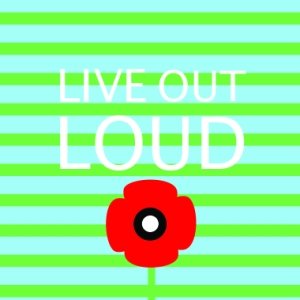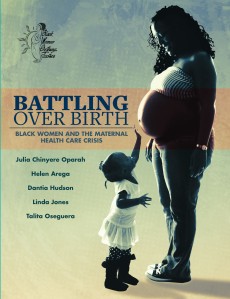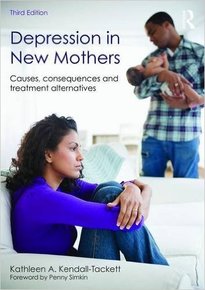Robyn Roche-Paull, BSN, RNC-MNN, IBCLC
What is the impact of tattoos and piercings on the breastfeeding relationship? And what are the safety precautions?
In recent years there has been an explosion in the popularity of body modifications such as tattoos and piercings. While it’s nothing new—both body piercings and tattoos have been performed, in one form or another, worldwide for over 5000 years (DeBoer, Seaver, Angel, & Armstrong, 2008)—more people are wondering whether they can get a tattoo or piercing while they are breastfeeding.

Body modification is now a mainstream practice and everyone is doing it, from celebrities and doctors, to schoolteachers and stay-at-home mothers. Women today get tattoos and piercings as a form of self-expression or sexual enhancement, or to commemorate a special occasion or life event. Some women have tattooing done for cosmetic reasons (permanent make-up, breast reconstruction) or to camouflage disfigurements or scars. For whatever reason, women today have, or are getting, body modifications in ever-greater numbers at the same time that many are also becoming mothers. Recent studies have shown that across Western societies, the Millennial generation has the highest numbers of body modifications with ranges of 7–23% for piercings and 10–38% with tattoos (Bone, Ncube, Nichols, & Noah, 2008; Pew Research Center, 2010; Laumann & Derick, 2006; Makkai & McAllister, 2001; Stirn, Hinz, & Brahler, 2006).
Along with the rise in body modifications, breastfeeding has seen a resurgence in popularity. With breastfeeding rates climbing worldwide, it is not surprising that many new mothers who either have body modifications or who may be thinking about getting one, might have questions about safety. So what does a pierced and tattooed breastfeeding (or soon-to-be) mother need to know?
Are body mods and breastfeeding compatible?
 Piercings. Traditionally the ears, nose and mouth were the most common areas to be pierced. However, during the past 20 years “intimate piercings” in the nipples and genitals have become much more commonplace and popular throughout Australia, Canada, the EU and the United States. Nipple piercings are a favorite among body mod fans, but they require patience and are not without risk to mother and baby. Nipple piercings can take up to a full year to heal completely, and infections and rejections are the most common problems encountered. Local and systemic infections can occur if proper aftercare procedures and universal precautions are not followed. Rejection of the piercing is a concern (rejection is a body’s natural reaction to a foreign object being inserted into the skin). You may have to let the piercing close and then re-pierce the nipple and repeated piercings can create scar tissue that might block milk ducts (Angel, 2009).
Piercings. Traditionally the ears, nose and mouth were the most common areas to be pierced. However, during the past 20 years “intimate piercings” in the nipples and genitals have become much more commonplace and popular throughout Australia, Canada, the EU and the United States. Nipple piercings are a favorite among body mod fans, but they require patience and are not without risk to mother and baby. Nipple piercings can take up to a full year to heal completely, and infections and rejections are the most common problems encountered. Local and systemic infections can occur if proper aftercare procedures and universal precautions are not followed. Rejection of the piercing is a concern (rejection is a body’s natural reaction to a foreign object being inserted into the skin). You may have to let the piercing close and then re-pierce the nipple and repeated piercings can create scar tissue that might block milk ducts (Angel, 2009).
Nipple piercings can take up to a full year to heal completely, and infections and rejections are the most common problems encountered.
None of the major medical organizations worldwide has made statements on the issue of nipple piercing and breastfeeding. If you are contemplating getting a piercing and also want to have a baby, it is best to plan to get the piercing done at least 12–18 months before you plan to get pregnant. This allows the piercing time to heal before the changes that accompany pregnancy occur. It also will allow for removal of the jewelry during breastfeeding without the worry of the channel closing up. Reputable piercers will NOT pierce a pregnant or breastfeeding woman knowingly. Both pregnancy and piercings are taxing on the immune system and you owe it to yourself to focus on growing your baby! In addition, your pierced nipple(s) must have time to heal without any saliva from a baby entering the open wound and the jewelry must stay in place during the healing period, something that is next to impossible to achieve with a young baby to feed frequently.

Both pregnancy and piercings are taxing on the immune system and you owe it to yourself to focus on growing your baby!
If you already have nipple piercings you may be concerned about your ability to breastfeed in the future. Anecdotal evidence shows that breastfeeding is not generally affected by established nipple piercings. Human nipples have many nipple pores and it is unlikely that a well-healed piercing will block all of them. However, there has been some recent research pointing to a few reported cases of abnormal milk production in women with nipple piercings due to possible blocked ducts (Garbin, Deacon, Rowan, Hartmann, & Geddes, 2009). More often women find that when they do remove their jewelry for a feeding that milk leaks out the piercing and this can be a problem if the flow is too fast for your baby. Be proactive about preventing or reducing any engorgement and be on the lookout for blocked ducts or mastitis, all of which may be exacerbated by nipple piercings (Armstrong, Caliendo, & Roberts, 2006).
 It is best to remove your jewelry for each feeding, to reduce the risk of your baby aspirating or choking, although some women do nurse with flexible PTFE barbells in place (Angel, 2009). Removing your jewelry also reduces the risk of latching-on problems, damage to the inside of your baby’s mouth, or the passing of bacteria from the jewelry to your baby (Armstrong et al., 2006). If you choose to keep your jewelry out permanently until your baby is weaned, be aware that even a fully healed piercing may close and some women have noticed nipple pain in a previously pierced nipple while nursing (Wilson-Clay & Hoover, 2017). You can keep the piercing open by inserting an insertion taper on a regular basis. If the channel closes completely wait at least three months following weaning before re-piercing. If you face any problems with breastfeeding be sure to contact an IBCLC for help.
It is best to remove your jewelry for each feeding, to reduce the risk of your baby aspirating or choking, although some women do nurse with flexible PTFE barbells in place (Angel, 2009). Removing your jewelry also reduces the risk of latching-on problems, damage to the inside of your baby’s mouth, or the passing of bacteria from the jewelry to your baby (Armstrong et al., 2006). If you choose to keep your jewelry out permanently until your baby is weaned, be aware that even a fully healed piercing may close and some women have noticed nipple pain in a previously pierced nipple while nursing (Wilson-Clay & Hoover, 2017). You can keep the piercing open by inserting an insertion taper on a regular basis. If the channel closes completely wait at least three months following weaning before re-piercing. If you face any problems with breastfeeding be sure to contact an IBCLC for help.
Tattooing. Tattooing has a long and storied history as well. The word “tattoo” comes from the Polynesian word, “tattau,” meaning “to mark” or “to tap,” a reference to how the tattoo was applied. Tattoos have been found across cultures in Asia, Africa, the Americas, Australia and Europe for thousands of years. Tattoos are a permanent form of artwork etched into the flesh and are not without risk. Tattoos are created by injecting ink into the dermal layer of the skin and the inks used may contain metal oxides, organic compounds, or synthetic dyes (Kaatz, Elsner, & Bauer, 2008).

In the United States and the EU, tattoo inks are subject to FDA or Cosmetic Directive regulations as cosmetics, but none is approved for injection into the skin (Administration, 2012; Vasold, Engel, König, Landthaler, & Bäumler, 2008).
As with piercings, local and systemic bacterial or viral infections are the major risks of tattooing, usually due to not following proper aftercare instructions or receiving a tattoo from a studio that does not practice universal precautions. None of the major world health organizations has a policy statement on the compatibility of tattoos and breastfeeding.
None of the major world health organizations has a policy statement on the compatibility of tattoos and breastfeeding.
However, The Breastfeeding Atlas (Wilson-Clay & Hoover, 2017) and Breastfeeding: An illustrated guide to diagnosis and treatment (Both, 2008) both state that already present tattoos, on the breast or elsewhere, do not impact breastfeeding. The possibility of the ink migrating into the mother’s blood plasma and then into the milk-making cells of the breast is negligible due to the size of the ink molecule. However, some of the inks used in tattoos have been shown to have carcinogenic properties or bacterial contamination, and it is also possible to have an allergic reaction to the tattoo inks (Kaatz et al., 2008).
Few, if any, professional tattoo artists will knowingly tattoo a woman who is currently breastfeeding. While there are no clear-cut medical reasons against receiving a tattoo while breastfeeding, many tattoo artists feel that the body needs time to heal and that is harder to do when the body is also producing milk to nourish a child. Also a newborn baby is far more vulnerable to any possible infections or reactions than a nursing toddler. Anecdotal evidence from various discussion boards related to body modifications shows that many mothers do go ahead and get tattoos while breastfeeding with no ill effects on their baby or themselves. Deciding to get a tattoo while breastfeeding is really a judgment call for you as the mother.

Is it safe to have a tattoo removed while breastfeeding?
It is estimated that 20% of people who get tattoos later regret the decision and wish to have them removed (Armstrong et al., 2008). The medical literature says little regarding the safety of tattoo removal while breastfeeding. Tattoo removal is accomplished with the use of Q-switched lasers. The laser causes the tattoo pigment to fragment into smaller particles that are picked up by the immune system and filtered out via the lymphatic system. The most common side effects include pigmentation changes, local infection (due to not following the aftercare regimen) and possible allergic reaction to the ink that is now “free” in the mother’s system. However it is unknown whether the ink particles can enter into breast milk (Kaatz et al., 2008; Vasold et al., 2008).

Universal Precautions. Whether you are contemplating a tattoo or getting your nipples pierced it is very important that your tattoo artist or piercer follow Universal Precautions. Professional tattooists and piercers will follow all universal precautions such as sterilization of the tattoo machine and piercing implements using an autoclave, single-use inks, ink cups, gloves and needles, bagging of equipment to avoid cross contamination, thorough hand washing with disinfectant soap and the wearing of gloves when performing the tattoo or piercing (Armstrong et al., 2006). Any jewelry that is to be inserted should be kept sterile before insertions as well.

It is important to screen your tattoo artist and the shop carefully, checking with the local health department for local laws and regulations. Reputable body artists support regulations and legislation to keep their customers safe and to legitimize the profession. However, the artist’s training, sterilization of instruments and inspection of the studios depends on federal/state/provincial laws. Australia regulates body modifications at the State or Territorial level (Makkai & McAllister, 2001). Canada has federal guidelines for tattooing and piercing, as does Mexico. Within the European Union, regulation varies from country to country and EU-wide regulations are in development. Spain’s laws vary from province to province, while nationwide laws are in place in the United Kingdom, Italy, Iceland and the Netherlands (Armstrong, Koch, Saunders, Roberts, & Owen, 2007; Papameletiou, Zenié, Schwela, & Bäumler, 2003; Worp, Boonstra, Coutinho, & van den Hoek, 2006). The United States does not have Federal legislation regarding body art, however 41 states have passed legislation regulating tattooing and piercing, with mandatory licensing, registration or permits required in only 74% of U.S. states (Armstrong, Carlson, & Lehman, 2012). It should also be noted that within the United States, U.K. and Australia, human milk cannot be donated to a milk bank if the mother has received a piercing or tattoo within the previous 12 months due to possible infectious disease transmission (HMBANA, 2003).
Reputable body artists support regulations and legislation to keep their customers safe and to legitimize the profession.
Breastfeeding and body modifications are compatible if you choose a reputable artist, follow proper aftercare procedures, and are fully informed about any possible risks to your baby and yourself. You can certainly provide your baby with his mother’s milk from a very beautifully decorated and adorned body.
References

Administration, U.S. Food and Drug. (2012). Tattoos & Permanent Makeup. Retrieved from https://www.fda.gov/Cosmetics/ProductsIngredients/Products/ucm108530.htm
Angel, E. (2009). The piercing bible: the definitive guide to safe body piercing. Berkeley, Calif.: Celestial Arts. https://www.amazon.co.uk/Piercing-Bible-Definitive-Guide-Safe/dp/1580911935
Armstrong, M., Caliendo, C., & Roberts, A. (2006). Pregnancy, lactation and nipple piercings. AWHONN Lifelines, 10(3), 212–217. doi:10.1111/j.1552-6356.2006.00034.x
Armstrong, M.L., Koch, J.R., Saunders, J.C., Roberts, A.E., & Owen, D.C. (2007). The hole picture: risks, decision making, purpose, regulations, and the future of body piercing. Clinics in Dermatology, 25(4), 398–406. doi:10.1016/j.clindermatol.2007.05.019

Armstrong, M.L., Roberts, A.E., Koch, J.R., Saunders, J.C., Owen, D.C., & Anderson, R.R. (2008). Motivation for contemporary tattoo removal. Archives of Dermatology, 144(7). doi:10.1001/archderm.144.7.879
Association of nipple piercing with abnormal milk production and breastfeeding. (2009). JAMA, 301(24), 2550. doi:10.1001/jama.2009.877
Bone, A., Ncube, F., Nichols, T., & Noah, N.D. (2008). Body piercing in England: a survey of piercing at sites other than earlobe. BMJ, 336(7658), 1426–1428. doi:10.1136/bmj.39580.497176.25
Both, D., & Frischknecht, K. (2008). Breastfeeding: An illustrated guide to diagnosis and treatment. Marrickville, NSW: Elsevier Australia.
Carlson, V.P., Lehman, EJ., Armstrong, M.L. (2012). Tattooing Regulations in U.S. States, 2011, Journal of Environmental Health, Denver. 75(3), 30–37.
DeBoer, S., Seaver, M., Angel, E., & Armstrong, M.L. (2008). Puncturing myths about body piercing and tattooing. Nursing, 38(11), 50–54. doi:10.1097/01.nurse.0000341082.06448.28
HMBANA, Human Milk Banking Association of North America. (2003). Guidelines for establishment and operation of a donor human milk bank. Raleigh, NC: Human Milk Banking Association of North America, Inc.
Kaatz, M., Elsner, P., & Bauer, A. (2008). Body-modifying concepts and dermatologic problems: tattooing and piercing. Clinics in Dermatology, 26(1), 35–44. doi:10.1016/j.clindermatol.2007.10.004
Laumann, A.E., & Derick, A.J. (2006). Tattoos and body piercings in the United States: A national data set. Journal of the American Academy of Dermatology, 55(3), 413–421. doi:10.1016/j.jaad.2006.03.026
Makkai, T., & McAllister, I. (2001). Prevalence of tattooing and body piercing in the Australian community. Commun Dis Intell Q Rep, 25(2), 67–72.
Papameletiou, D., Zenié, A., Schwela, D., & Bäumler, W. (2003). Risks and health effects from tattoos, body piercing and related practices. Peer reviewed by the “JRC-TattooNet” Final draft Ispra May 2003.
Pew Research Center. (2010). Millenials: A portrait of “generation next.” How young people view their lives, futures and politics. Retrieved from http://www.people-press.org/2007/01/09/a-portrait-of-generation-next/
Stirn, A., Hinz, A., & Brähler, E. (2006). Prevalence of tattooing and body piercing in Germany and perception of health, mental disorders, and sensation seeking among tattooed and body-pierced individuals. Journal of Psychosomatic Research, 60(5), 531–534. doi:10.1016/j.jpsychores.2005.09.002
Vasold, R., Engel, E., König, B., Landthaler, M., & Bäumler, W. (2008). Health risks of tattoo colors. Analytical and Bioanalytical Chemistry, 391(1), 9–13. doi:10.1007/s00216-008-1978-z
Wilson-Clay, B, & Hoover, K. (2017). The Breastfeeding Atlas, 6th edition. Amarillo, TX: Praeclarus Press.
Worp, J., Boonstra, A., Coutinho, R.A., & van den Hoek, J.A.R. (2006). Tattooing, permanent makeup and piercing in Amsterdam; guidelines, legislation and monitoring.
Eurosurveillance, 11(1), 5–6. doi:10.2807/esm.11.01.00591-en

Robyn Roche-Paull, BSN, RNC-MNN, IBCLC, is the award-winning author of the book, Breastfeeding in Combat Boots: A Survival Guide to Successful Breastfeeding While Serving in the Military and the Executive Director of the non-profit, Breastfeeding in Combat Boots.






















Leave a comment